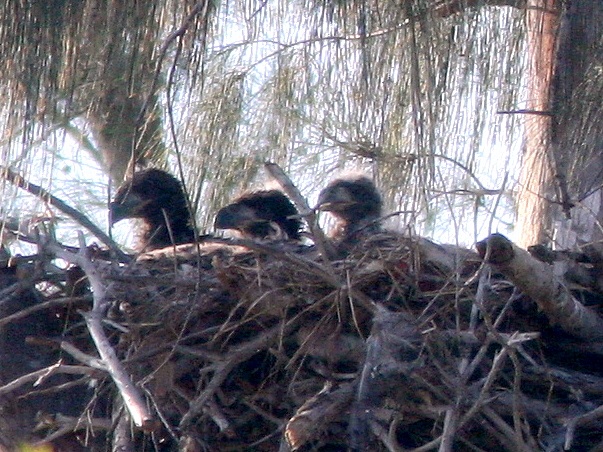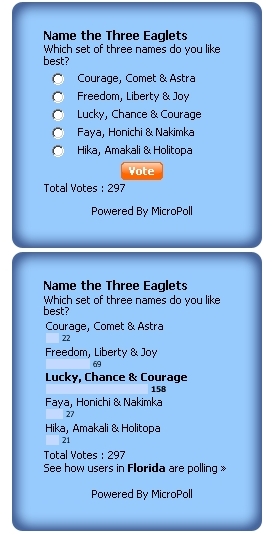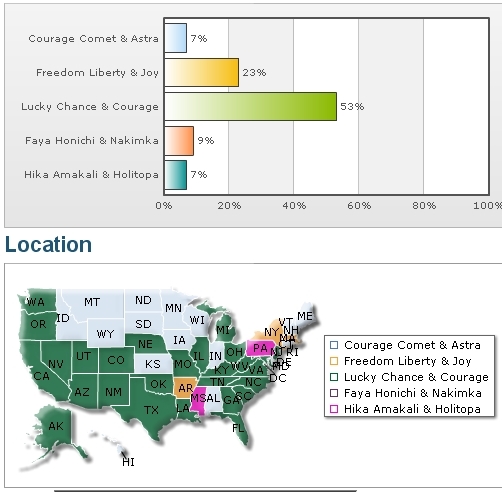and the youngest, hatched about 7-10 days later, is on the far right.
 Bald Eagles have established the first recorded
successful nest in
Broward County, Florida of this Century. In 2008, they
successfully
raised one chick, whom we named "P.Piney One." Last
season (2009) they had two chicks, named Hope and Justice. Hope hatched
on January 17, and Justice 3 or 4 days later. Both learned to fly in
early April, and kept returning to the nest to be fed by the parents
until late May. The
nest is located within 200 feet of a very busy thoroghfare, and has
attracted much attention, due to its accessibility and the opportunity
for so many citizens to observe their home life so very close at hand.
Bald Eagles have established the first recorded
successful nest in
Broward County, Florida of this Century. In 2008, they
successfully
raised one chick, whom we named "P.Piney One." Last
season (2009) they had two chicks, named Hope and Justice. Hope hatched
on January 17, and Justice 3 or 4 days later. Both learned to fly in
early April, and kept returning to the nest to be fed by the parents
until late May. The
nest is located within 200 feet of a very busy thoroghfare, and has
attracted much attention, due to its accessibility and the opportunity
for so many citizens to observe their home life so very close at hand.The Bald Eagles in Florida have recovered from a low of less than 50 pairs to now number over over 1,300, and have been removed from the list of Endagered Species. The state-wide population of these majestic birds continues to grow, but their normal wilderness habitat continues to shrink due to development, agriculture, and several extensive fires. Since eagles require a feeding and roosting territory that is at least 2 miles around each nest, they are being squeezed out of their normal habitat, and are now re-entering parts of their historic range that are now become cities and towns. These newly "urbanized" eagles are learning to adapt to the hazards (and benefits) of living with humankind, and we in turn, are finding ways to accomodate to their presence.


